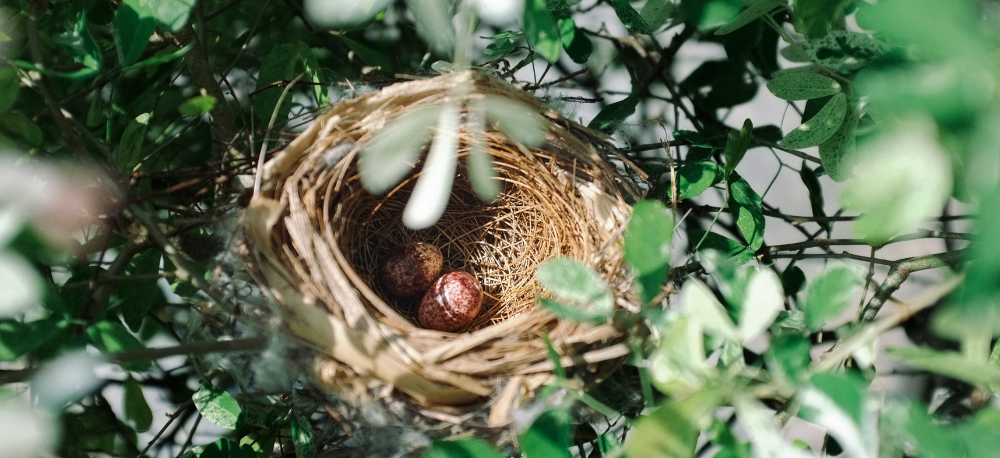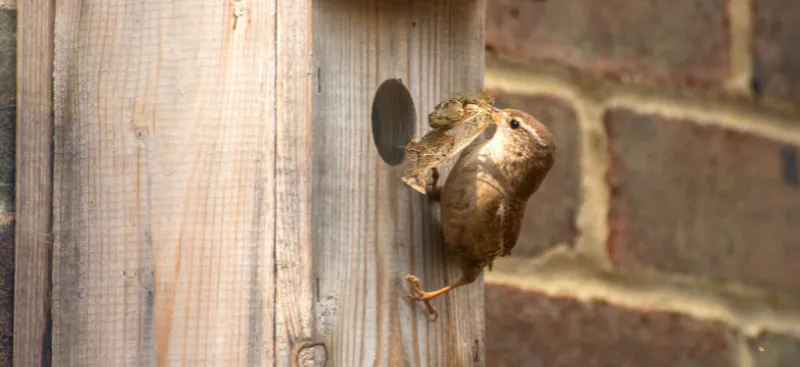Which Nest Box for Which Bird
One of the most important things to remember when it comes to siting nest boxes is that every bird has their own preferences for nests, and when a box may be suitable for one bird, it may not be for another. That being said, any good-quality nest box is better than no nest box, so you can't really go wrong! See below to get more insight into birds' preferences for nest boxes.
What birds use 26-28mm nest boxes?
- Blue Tits
- Coal Tits
- Marsh tits
- Willow Tits
For some of our smallest garden birds, it's the nest box with the small entrance hole they'll call home. Site the box 2 to 4 meters off the ground. If possible, face the box between North and East to avoid rain, wind and direct heat from the sun. When securing the box against a solid surface, allow it to sit tilted forward slightly so rain won't get in through the entrance hole.
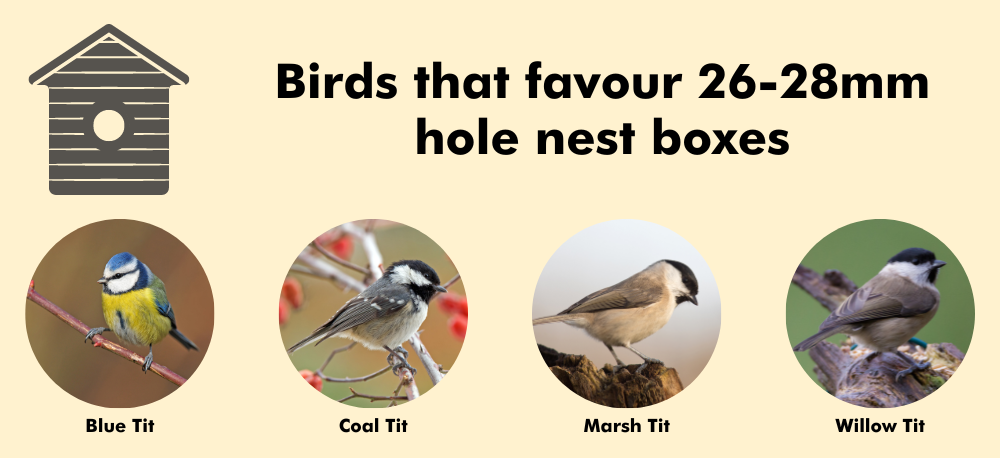
What birds use 32mm, 34mm, and oval nest boxes?
- House Sparrows
- Tree Sparrows
- Pied Flycatchers
- Nuthatches
- all Tits
These slightly larger birds will need a nest box with a slightly larger hole to fit through. This type of nest box can also be sited between 2 and 4 metres above the ground. If possible, face the box between North and East to avoid rain, wind and direct heat from the sun. When securing the box against a solid surface, let it sit tilted forward slightly so rain won't get in through the entrance hole.
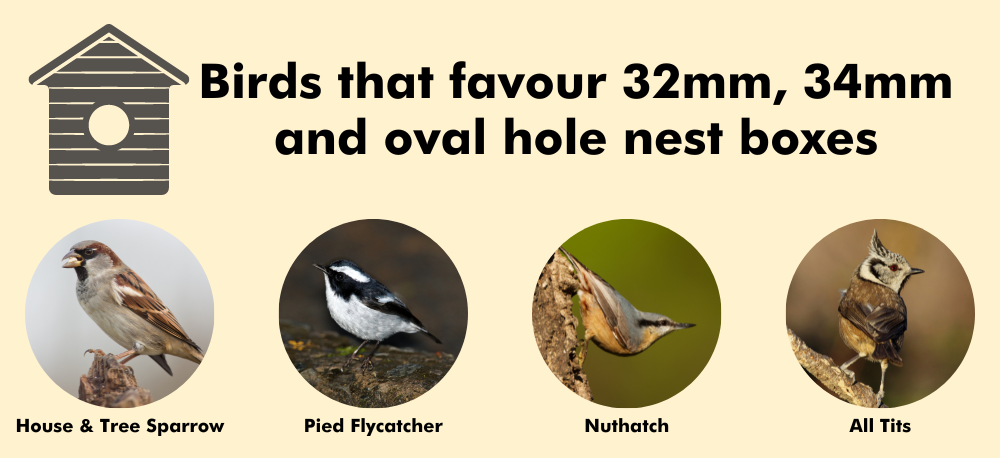
What birds use open-fronted nest boxes?
- Robin
- Wren
- Redstart
- Pied Wagtail
- Spotted Flycatcher
If you want any of these birds nesting in your garden, it's the open-fronted nest box you'll want to opt in for. Hang this nest box no more than 1-2 meters above the ground, surrounded by natural covers like bushes and foliage- but make sure the flight path is not blocked. If possible, face the box between North and East to avoid rain, wind and direct heat from the sun. When securing the box against a solid surface, allow it to sit tilted forward slightly so rain won't get in through the entrance hole.
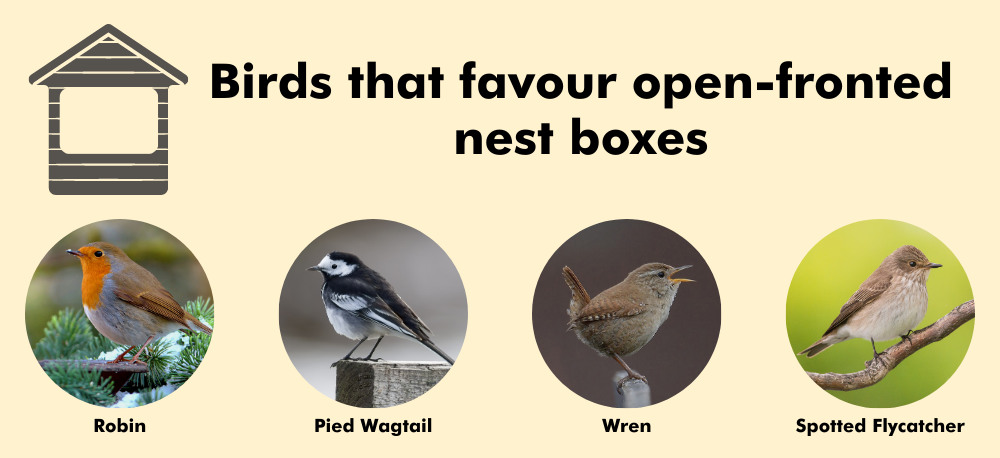
TOP TIP: Protect your birds' eggs
Predators such as squirrels and woodpeckers may try to access nest boxes to eat the eggs. They do this by eating/pecking away at the wooden entrance hole until it's large enough to get inside. Keep your garden birds' eggs safe this nesting season, and fix protection plates to your nest box entrance hole. These strong copper plates will withstand any attack from predators and prevent them from breaking in.
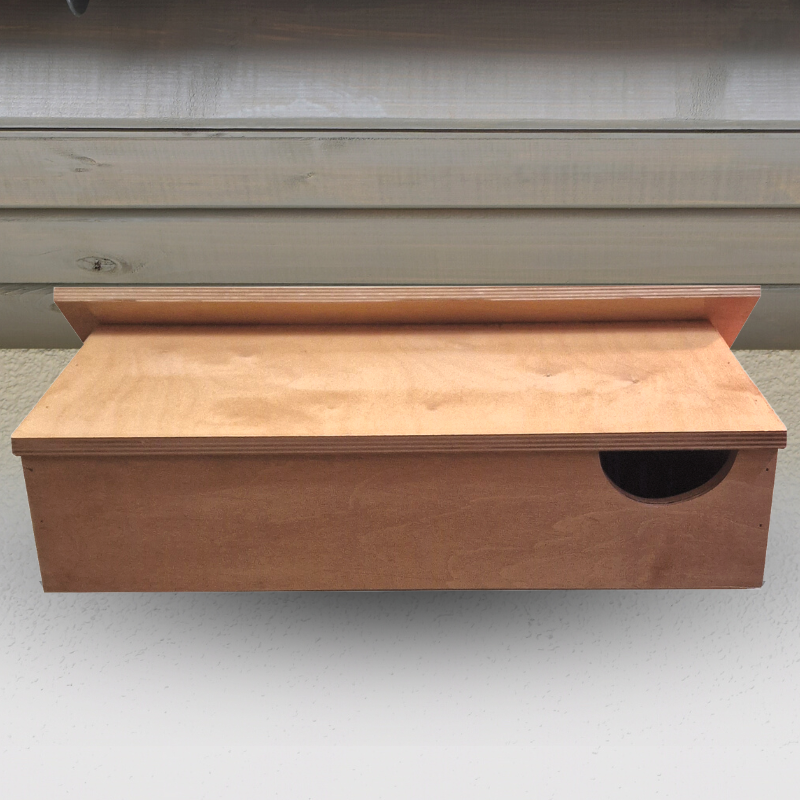
Nest boxes for Swifts
Help a red-listed bird this nesting season, and place a swift nest box in your outdoor space. You'll want to site your swift nest box on a flat surface as high as possible (ideally +5 meters from the ground) on the exterior of your home or outer building. Make sure the box has a clear flight path below the nest. Shop Swift Nest Box
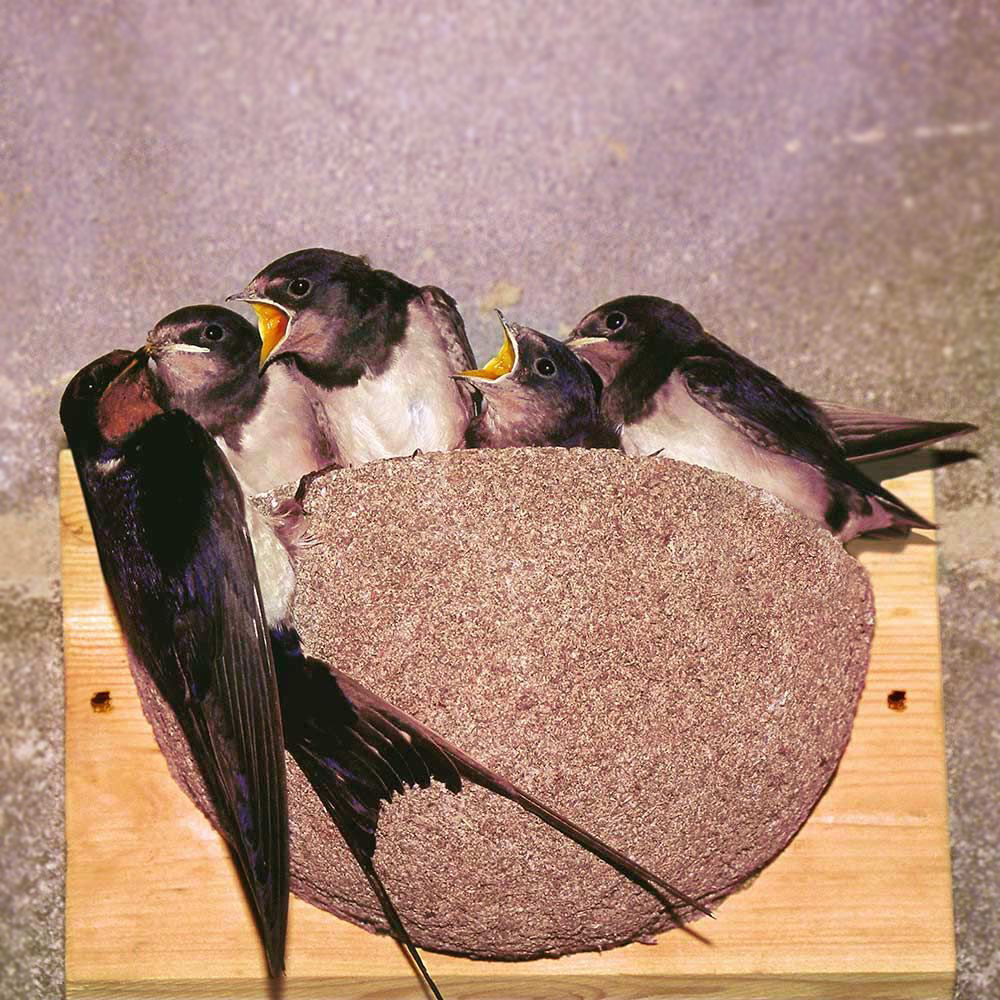
Nest boxes for Swallows
A swallow nest should be sited inside a porch or outbuilding, which allows easy access for the birds via an open door or window, such as a garage or outhouse. To ensure the swallows have enough room in the nest cup to arrive and depart, there should be at least 6 cm of free space above the nest cup. If you would like to put up multiple swallow nest cups, a minimum distance of 1m between cups is advised. Shop Swallow Nest Cups
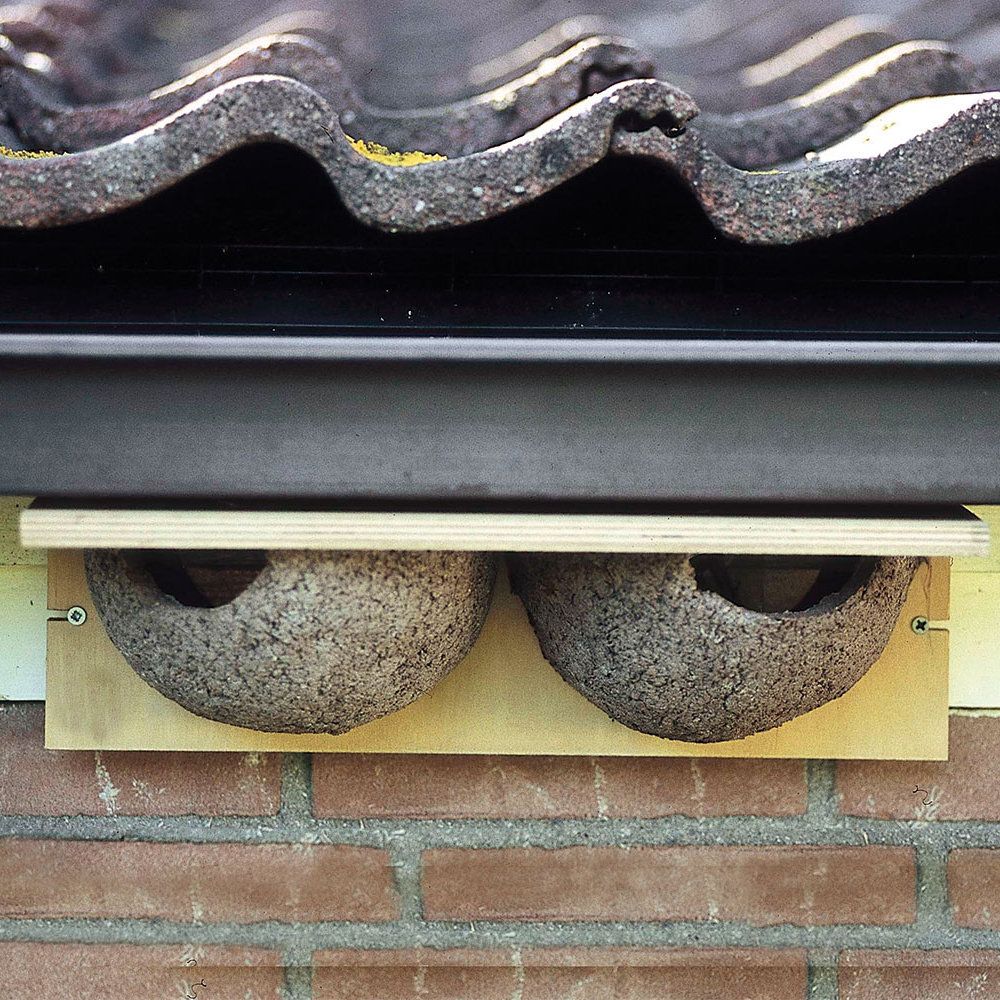
Nest boxes for House Martins
House martins like to nest underneath the eaves (the part of a roof that meets/ overhangs the walls) of the outer walls of buildings. So, under the exterior eaves of your home or outbuilding will be a great place to site a house martin nest box. Make sure you place it at a minimum height of 2m above the ground. Shop House Martin Nest Box
TOP TIP: More nest boxes = more birds!
You don't need to have just one box in the garden; place two or three boxes with various entrance holes, and see how many different species nest in your garden.
What wild birds won't use nest boxes?
- Goldfinches
- Goldcrests
- Long-tailed tits
- Chaffinches
Don't get your hopes up on having any of these garden birds using your nest boxes. They much prefer to build their own nests from scratch in the comfort of bushes and trees.
